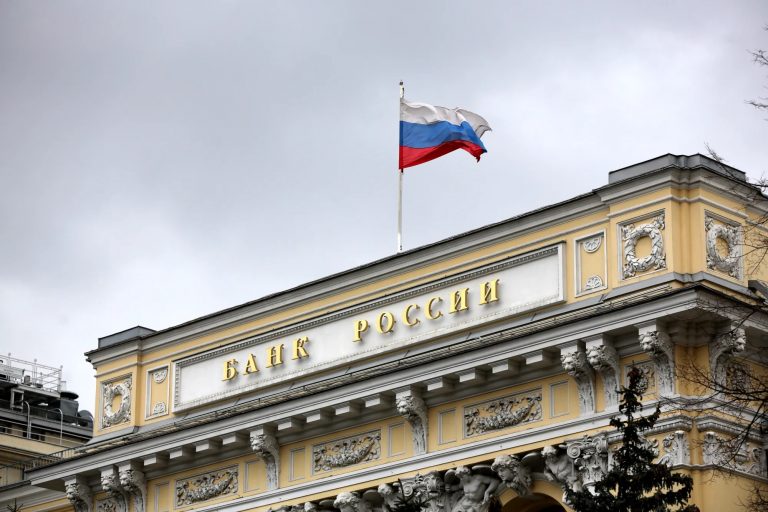
Russia’s Ministry of Finance and Central Bank are developing a cryptocurrency exchange targeting “super-qualified investors” as part of a three-year experimental legal regime (ELR). Announced by Finance Minister Anton Siluanov on April 23, 2025, the platform aims to legalize and regulate crypto transactions for high-net-worth individuals, bringing operations “out of the shadows.”
Initially proposed requirements for “super-qualified investors” include assets of at least 100 million rubles ($1.2 million) or an annual income exceeding 50 million rubles ($600,000). These thresholds are not finalized and may be adjusted following discussions, as noted by Osman Kabaloev, Deputy Director of the Finance Ministry’s Financial Policy Department. The exchange seeks to formalize crypto trading under strict oversight, aligning with Russia’s broader strategy to regulate digital assets while limiting access to elite investors. It will not operate within Russia’s domestic financial system but handle transactions permitted under the ELR.
Qualified investors who don’t meet the “super-qualified” criteria can still access crypto-linked derivatives (e.g., securities or financial instruments tied to crypto prices) without direct ownership. The Moscow Exchange and SPB Exchange plan to launch such products in 2025, pending regulatory approval. The exchange is at least six months from launch, as stated by Deputy Finance Minister Ivan Chebeskov in March 2025.
Register for Tekedia Mini-MBA edition 19 (Feb 9 – May 2, 2026): big discounts for early bird.
Tekedia AI in Business Masterclass opens registrations.
Join Tekedia Capital Syndicate and co-invest in great global startups.
Register for Tekedia AI Lab: From Technical Design to Deployment (next edition begins Jan 24 2026).
Russia’s move follows its cautious embrace of crypto, including legalizing Bitcoin for international trade settlements in December 2024 and exploring a national stablecoin after U.S. sanctions froze Russian-linked wallets. However, cryptocurrencies remain banned for domestic payments, and the Central Bank opposes their use as legal tender. The initiative may help Russian businesses bypass Western sanctions by facilitating crypto-based cross-border transactions, a strategy supported by President Vladimir Putin and discussed at the BRICS summit.
Some financial experts, like Igor Danilenko of Renaissance Capital, criticize crypto as a volatile asset class resembling a “pyramid scheme,” highlighting divided opinions within Russia’s financial sector. Bitget COO Vugar Usi Zade likened Russia’s approach to Singapore’s early regulated exchange model, though with a geopolitical focus on BRICS trade amid sanctions.
This development signals Russia’s pragmatic shift toward regulated crypto use, balancing innovation with tight control, but its impact may be limited by the exclusive investor criteria and ongoing regulatory debates. The development of Russia’s cryptocurrency exchange for “super-qualified investors” carries several implications across economic, geopolitical, regulatory, and social dimensions.
By bringing crypto transactions under a regulated framework, Russia aims to reduce illicit activities and tax evasion, potentially increasing government revenue through oversight of high-value transactions. The focus on “super-qualified investors” (high-net-worth individuals) restricts broader participation, limiting the exchange’s role in Russia’s domestic economy. Only derivatives will be accessible to less wealthy qualified investors, reducing mainstream adoption.
The exchange could spur development of blockchain and financial tech industries in Russia, fostering innovation in secure trading platforms and derivative products. Critics, like Igor Danilenko, warn of crypto’s volatility, which could pose risks to investors and destabilize financial instruments tied to the exchange.
The exchange aligns with Russia’s strategy to use crypto for international trade settlements, bypassing Western sanctions. This supports efforts to strengthen BRICS economic ties and reduce reliance on the U.S. dollar. Russia’s push for crypto adoption, potentially including a national stablecoin, could encourage other BRICS nations (e.g., China, India) to explore similar regulated platforms, reshaping global trade dynamics.
The move may position Russia as a leader in regulated crypto adoption among sanctioned economies, though its restrictive approach may limit its appeal compared to more open markets like Singapore. The high eligibility threshold (e.g., ~$1.2M in assets) and strict oversight reflect Russia’s cautious stance, balancing innovation with control. This could set a precedent for heavily regulated crypto markets globally.
The three-year ELR allows Russia to test the exchange’s viability without fully integrating crypto into the domestic financial system, minimizing systemic risks. The Central Bank’s opposition to crypto as legal tender suggests ongoing regulatory friction, which could delay or complicate implementation. Russia’s model may influence international regulatory debates, particularly in jurisdictions seeking to balance crypto innovation with anti-money laundering (AML) and investor protection measures.
Restricting access to “super-qualified investors” reinforces wealth inequality in crypto access, potentially fueling public skepticism or resentment, especially given crypto’s decentralized ethos. A regulated exchange could attract wealthy Russians to repatriate crypto assets from offshore platforms, boosting confidence in local markets. However, the high entry barriers may deter smaller investors.
While the exchange signals growing acceptance, its limited scope may slow broader crypto adoption in Russia compared to countries with more inclusive policies. Positive sentiment on platforms like X (e.g., from crypto influencers) suggests short-term market optimism, but long-term success depends on regulatory clarity and global crypto trends.
Increased crypto use for sanctions evasion could prompt stricter Western countermeasures, targeting Russian-linked wallets or exchanges. Unfinalized criteria and potential Central Bank pushback may delay the exchange’s launch or undermine its credibility. The focus on elite investors raises concerns about potential market concentration or manipulation in a low-liquidity environment.
Russia’s exchange may struggle to compete with established platforms in jurisdictions with more mature crypto ecosystems (e.g., Dubai, Singapore). Russia’s crypto exchange for “super-qualified investors” is a strategic move to harness digital assets for geopolitical and economic goals while maintaining strict control. It strengthens Russia’s position in sanctioned trade and BRICS alliances but risks reinforcing elitism and regulatory fragmentation. Its success hinges on clear rules, investor trust, and navigating global sanctions, with broader adoption likely limited by its exclusive focus.



